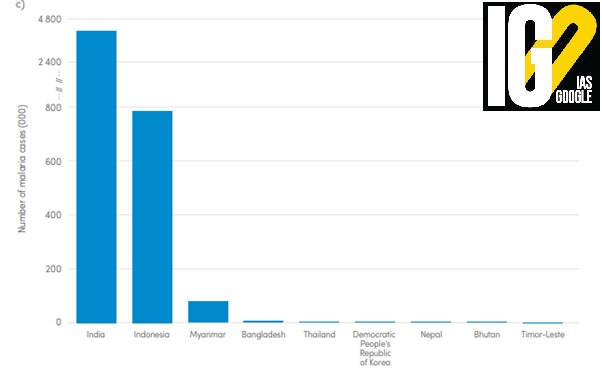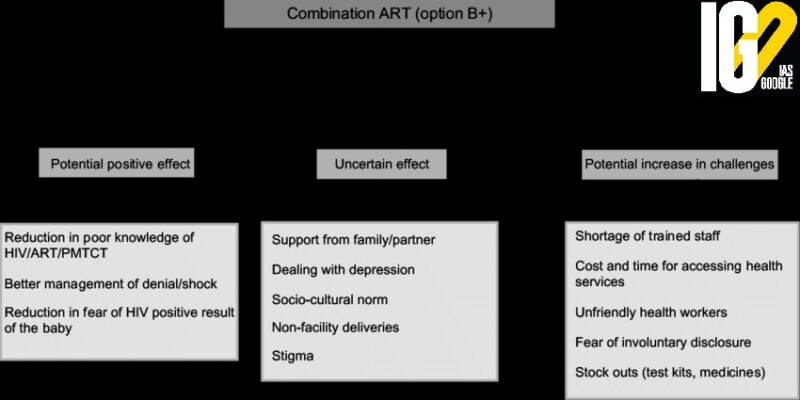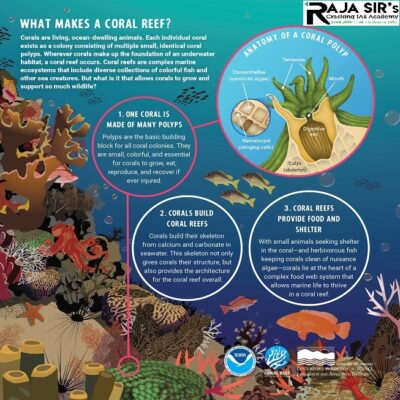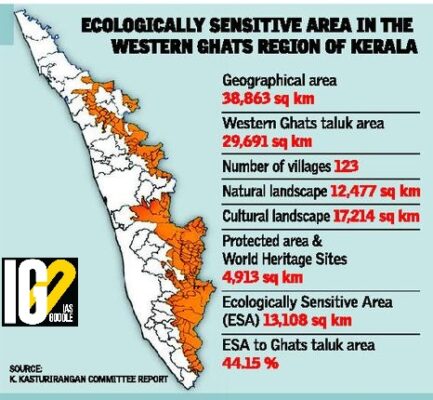- Home
- Prelims
- Mains
- Current Affairs
- Study Materials
- Test Series
 EDITORIALS & ARTICLES
EDITORIALS & ARTICLES
Dec 8, 2021
GOVERNMENT PLANS TO AMEND NOTARIES ACT; PUTS DRAFT BILL IN PUBLIC DOMAIN
The Centre came out with a draft Notaries (Amendment) Bill.
Proposed Amendments in the Bill:
The Bill seeks to:













 Plant based chewing gum was recently discovered by the researchers of University of Pennsylvania.
Plant based chewing gum was recently discovered by the researchers of University of Pennsylvania.
- Restrict the number of terms a person can practise as a notary.
- It is proposed to restrict the overall term of notaries for a period up to 15 years (initial term of five years and two renewal terms of five years each).
- Extend power to suspend the certificate of practice in cases of professional misconduct by the appropriate government for conduct of inquiry.
- Digitise and automate the notarial work undertaken by notaries.
- The Notaries Act, 1952 was enacted to regulate the profession of notaries.
- The act empowers he Central government as well as State governments to appoint notaries who possess the prescribed qualifications.
- There are fixed number of Notaries who are appointed by the Central as well as State Governments.
- There are a fixed number of notaries who can operate in fixed areas, keeping in view the commercial importance and the requirement of that particular area.
- As per the existing provisions of the law, the number of terms of renewal of certificates of practice of a notary is unrestricted after the initial appointment.
- It will allow more young legal practitioners enter the field.
- Digitization will prevent misconduct in respect of notarization and safeguard the interests of general public.
- This will help to avoid any fraud, deceit, tampering of records and back-dating of notarization, etc.

- Aim: To amend the National Institute of Pharmaceutical Education and Research Act, 1998, which declared the NIPER established in Punjab, as an institution of national importance.
- Six additional National Institutes of Pharmaceutical Education and Research (NIPERs) as institutions of national importance are declared.
- It includes the institutes in Ahmedabad, Hajipur, Hyderabad, Kolkata, Guwahati, and Raebareli.
- The bill seeks to rationalize the board of governors of each such institute from its existing strength of 23 to 12 members.
- The bill will widen the scope and number of courses run by such institutes.
- It includes graduate and post-graduate degrees, doctoral and post-doctoral distinctions, and research in pharmaceutical education.
- The bill will provide for a council to ensure the development of pharmaceutical research and ensure close collaboration between research institutions and industry.
- Advising on matters related to course duration, and admission standards in the institutes.
- Formulating policies for recruitment, conditions of service, and fees.
- Examining and approving development plans of the institutes.
- Examining annual budget estimates of the institutes for recommendations to the central government for allocation of funds.

- This generation of students risks losing $17 trillion in lifetime earnings in present value, or about 14 percent of today’s global Gross Domestic Product.
- In low- and middle-income countries, 70 percent of children will be pushed to live in Learning Poverty, given the long school closures and the ineffectiveness of remote learning.
- Children from low-income households, children with disabilities, and girls were less likely to access remote learning than their peers.
- Learning losses were greater for students of lower socioeconomic status in countries like Ghana, Mexico, and Pakistan.
- To date, less than 3 percent of governments’ stimulus packages have been allocated to education.
- Invest in the enabling environment to unlock the potential of digital learning opportunities for all students.
- Reinforce the role of parents, families, and communities in children’s learning.
- Ensure teachers have support and access to high-quality professional development opportunities.
- Increase the share of education in the national budget allocation of stimulus packages.
- Initiate a phase-wise repopulation of the classrooms, with staggered and rotational rosters.
- Put in place Learning Recovery Programs with the objective of assuring that students of this generation attain at least the same competencies of the previous generation.
- Programs must cover three key lines of action to recover learning:
- Consolidating the curriculum
- Extending instructional time
- Improving the efficiency of learning.
- Programs must cover three key lines of action to recover learning:
- The National Council of Educational Research and Training (NCERT) has focused on digitizing textbooks and offering QR codes to students for easy accessibility.
- Several private-sector initiatives, with support from state governments, aim to improve literacy rates among schoolchildren and adults.
- This would be done primarily through training teachers, supporting technology and infrastructure development and promoting the benefits of reading to all.
- States such as Delhi and Andhra Pradesh implemented initiatives such as, child care institutions for kids who are in distress and need immediate attention.
- The Government has taken various steps to provide online education amidst COVID-19 pandemic.
- These include PRAGYATA Guidelines on Digital Education and Internet access under BHARAT NET scheme.
- The Centre conducted the National Achievement Survey (NAS) 2021across the country.
- The survey, which assesses the competencies developed by the students at the grade levels of 3rd, 5th, 8th and 10th, is conducted after every three years.

- Only 58 % of countries completed their planned campaigns to distribute insecticide-treated mosquito nets (ITNs) in 2020.
- In 2020, of the 65 countries, only 37 countries reported partial disruptions to malaria diagnosis and treatment services.
- 15 countries reported partial disruptions and 6 countries reported severe disruptions by 2021.
- The malaria burden is 627 thousand deaths in 2020.
- 7.8 % of deaths among children under-five years of age recognized.
- There was a 27 % reduction in case incidence of malaria from 2000 to 2020.

- Between 2019 and 2020, estimated malaria cases increased from 213 million to 228 million, and deaths from 534 000 to 602000.
- The region accounted for about 95% of cases and 96% of deaths globally; 80% of all deaths are among children aged under 5.
- South-East Asia Region had nine malaria endemic countries in 2020, accounting for 5 million cases and contributing to 2% of the burden of malaria cases globally.
- In 2020, India accounted for 83% of all malaria cases; more than a third of all cases in the region.
- Over the past 20 years, malaria cases have reduced by 78% from 22.9 million in 2000 to 5 million in 2020.

- By adopting more targeted, data-driven approach countries can maximize available resources while ensuring efficiency and equity in their malaria responses.
- Improving the process requires more and better data, and urgent and substantive investments in surveillance systems.
- Investment is needed to accelerate R&D.
- It will bring new diagnostics approaches, antimalarial medicines and vaccines needed to speed the pace of progress against malaria.
- There is a need for better and stronger healthcare system.
- The control and elimination of malaria depends on universal healthcare, inclusive of malaria prevention, diagnosis and treatment.
- Annual investments will need to more than triple by 2030 to reach global malaria targets.
- Reduce malaria case incidence by at least 90%;
- Reduce malaria mortality rates by at least 90%;
- Eliminate malaria in at least 35 countries;
- Prevent a resurgence of malaria in all countries that are malaria-free.
- Malaria is an acute febrile illness caused by Plasmodium parasites spread through the bites of infected female Anopheles mosquitoes.
- There are 5 parasite species that cause malaria in humans:
- Plasmodium falciparum
- Plasmodium malariae
- Plasmodium vivax
- Plasmodium ovale
- Plasmodium knowlesi
- P. falciparum is the deadliest malaria parasite and the most prevalent on the African continent.
- Fever, chills, headache, vomiting, diarrhea, muscle or joint pain etc.
- Malaria is caused by a single-celled parasite of the genus plasmodium.
- The parasite is transmitted to humans most commonly through mosquito bites.
- Uninfected mosquito: A mosquito becomes infected by feeding on a person who has malaria.
- Transmission of parasite: Mosquito bites can transmit malaria parasites in to the body.
- In the liver: Once the parasites enter the body they travel in to the liver and can lie dormant for long as a year.
- Into the bloodstream: When the parasites mature, they infect red blood cells reducing the immunity of a person.
- Increased H2S was found to have a direct effect on reducing the rate at which the virus multiplies in HIV-infected human immune cells.

- It can negate the shortcomings of current combined antiretroviral therapy (cART).
- Combined antiretroviral therapy (cART)can only suppress the virus by causing it to become latent.
- cART has some negative effects such as the build-up of toxic molecules leading to ‘oxidative stress’ and loss of function in the mitochondria.
- These effects can contribute to inflammation and organ damage.
- Hydrogen Sulphide showed a direct effect in suppressing the HIV reactivation and replication.
- It also maintained mitochondrial health and helped in dissipation of oxidative stress.
- Hydrogen sulphide (H₂S) is acolourless gas with a strong odour of rotten eggs.
- It is commonly called as sewer gas, stink damp due to its odour.
- It is found in volcanic gases and in the waters of certain mineral springs.
- Small amounts of hydrogen sulphide occur in crude petroleum.
- It is also formed as a result of the decomposition and decay of proteins present in living matter.
- The human body produces small amounts and uses it as a signalling molecule.
- It can also result from industrial activities, such as food processing, coke ovens, kraft paper mills, tanneries, and petroleum refineries.
- Hydrogen sulphide is a highly toxic and flammable gas.
- Because it is heavier than air, hydrogen sulphide can collect in low-lying and enclosed spaces manholes, sewers, and underground telephone vaults.
- It can poison several different systems in the body, although the nervous system is most affected.
- Exposure to hydrogen sulphide may cause irritation to the eyes and respiratory system.
- As an important reducing agent.
- In the manufacture of sulfuric acid for removing arsenic.
- Hydrogen sulphide is used in many industries.
- It is used to produce textiles

- After the death of issueless widow, the preference in succession is given to the husband's relatives, even if the properties were gifted to her by her parents or blood relatives.
- If the person sells her property inherited from her parents, and buys another property utilising that money, then that newly acquired property would not be categorised as inherited property to vest with her parents.
- Whether the property is inherited from the father or mother, the devolution will be upon the 'heirs of the father'
- That is, heirs of the mother cannot succeed even if the property was gifted by the mother.
- The Hindu Succession Act 1956
- It granted women ownership of property, whether it was acquired before or after the commencement of the Act.
- It abolished the ‘limited owner’ status.
- Hindu Succession (Amendment) Act, 2005
- It was decided that daughters would be entitled to an equal share in the property as the son.
- The Amendment serves as a defender for female rights.
- through the sons and daughters, which would also include the children of a predeceased son or a predeceased daughter) and the husband.
- on the heirs of the husband.
- upon the mother or the father.
- on the father’s heirs.
- on the heirs of the mother.
- In the case of any property being inherited by a female Hindu by her father or mother and there is no son or daughter of the deceased, then it shall devolve in favour of the heirs of the father.
- In the case of any property being inherited by a female Hindu by her husband or her father-in-law, and there is no son or daughter of the deceased, it shall devolve in favour of the heirs of the husband.
- Retention of Article 15
- The said section recognises women only on the basis of her relationship with a man, i.e., wife, daughter, etc.
- Therefore, it compromises the individuality and identity of a woman.
- It acts as a black mark on the issues of gender parity and women empowerment.
- It only focuses on daughters and wives
- The daughters-in-laws and sisters have not been included under the purview of the amendment.
- There is a lack of clarity as to whether the said act will override and supersede the state laws or not.
- The agricultural land, which was earlier the part of the act was made an item in the state list through the amendment.
- Ambiguity still exists in regards to the validly adopted daughters
- Rights of an adopted daughter in regards to inheritance of her father’s property is not mentioned anywhere in the act.
- It allowed a Hindu female to become an absolute owner of property.
- They were also given the right to dispose off the property at will.
- A window was also given importance regarding the succession of her husband's property as also to her father's property.
- Women were given rights to become coparceners even Karta
- A women can become Karta if she is the eldest member of her family.
- However, a widow cannot be a Karta of a family.

- Formed by: Colonies of coral polyps
- Class: Anthozoa
- Animal: Phylum Cnidaria
- Location: Found at shallow depths in tropical waters
- Coral needs sunlight to grow, which is why they thrive in shallow water.
- Under threat: They are under threat from:
- Excess nutrients
- Rising temperatures
- Oceanic acidification
- These are close to shore.
- It lies further out to sea
- Barrier’ reefs get their name because they protect shallow warm waters from the open sea.
- This protection creates an important habitat for many types of tropical fish and rare plants.
- They are usually mistaken for islands because they are so large and generally appear on the rim of a lagoon
- Coral reefs improve the structural integrity of the sea bed.
- Coral reefs also promote better water quality. The plants, animals, and organisms act as a filter, trapping debris that makes the surrounding environment cleaner.

- One of the recommendations of the report is to declare Western Ghats as ecologically sensitive zone would adversely affect the livelihood of people in the region.
- However, more than 600 villages fall under the Eco Sensitive Zone. People of the region have adopted agriculture and horticultural activities.
- Implementation of the report will halt the developmental activities in the region.
- The Western Ghats Ecology Expert Panel (WGEEP)was an environmental research commission appointed by the Ministry of Environment and Forests of India.
- It is also known as the Gadgil Commission after its chairman Madhav Gadgil.
- One of the mandated of the commission was recommend environment-oriented development and conservation strategies to be followed in western ghats.
- However, Gadgil Commission report was criticised for being too environment-friendly.
- Thus, Kasturirangan committee was constituted to re-check the Gadgil Commission

- UNESCO Heritage tag is an opportunity to build global and domestic recognition of Western Ghats.
- 37 % of the total area of Western Ghats to be declared as eco-sensitive area (ESA).
- Complete ban on mining, quarrying and sand mining in ESA.
- Red category industries and thermal power projects should be banned.
- Red Category Industry- Industries that are highly polluted.
- Impact of Infrastructural projects should be studied before permission is given.
- Conservation of the fragile ecosystems’ costs less, compared to the situation prone to calamities.
- They are continuous chain of hills starting from Tapti valley in the North to Kanyakumari in the South.
- It is also called the Sahyadri.
- It is a UNESCO World Heritage Site.
- States covered- Karnataka, Goa, Maharashtra, Gujarat, Kerala, and Tamil Nadu.
- It covers the area parallel to the western coast of the Indian peninsula.
- It is older than the great Himalayan Mountain chain.
- It is one of the world's biodiversity hotspots.
- It is recognized as one of the world’s eight ‘hottest hotspots’ of biological diversity.
- Anamudi is the highest peak.
- The Nilgiri Biosphere Reserve comprises the largest contiguous protected area in the Western Ghats.
- It acts as a Climatic barrier to the South - West monsoon winds.
- The soil is highly fertile.
- The climate is humid and tropical.
- Most of the rivers that rise in Western Ghats drain into Arabian sea.
- The major river systems originating in the Western Ghats- Godavari, Kaveri, Krishna, Thamiraparani and Tungabhadra rivers.
- Western Ghats account for 80% of India's hydropower generation.
- Fauna- Asian Elephant, Gaur and Tiger.
- Globally threatened (IUCN Red Data list)- 325 species
- Vulnerable- 129
- Endangered-145
- Critically Endangered- 51
- Endangered species-the lion-tailed Macaque, Nilgiri Tahr and Nilgiri Langur are found.
- Globally threatened (IUCN Red Data list)- 325 species
- Flora-
- Forest type-tropical rainforest, Montane forests, tropical dry forests and tropical moist forests
- 650tree species found in the Western Ghats.
- Poaching and trade
- Deforestation,
- Forest fires
- Habitat loss and fragmentation
- Dangers to native tribes
- Aim: To collect the funds from people for the betterment of the Armed Forces Staff by selling Indian flags, batches, stickers etc.

- A committee was set up on August 28, 1949, under the Defence Ministry. It decided to observe a Flag Day annually on December 7.
- The day is observed mainly to distribute flags to people and collect funds from them.
- The funds collected are used for the welfare of serving personnel, ex-servicemen and to rehabilitate battle casualties.
- The government established the Armed Forces Flag Day Fund (AFFDF) to aid in the welfare and rehabilitation of ex-servicemen (ESM).
- The fund collection is managed by the Kendriya Sainik Board (KSB), which is part of the Ministry of Defence.
- KSB at the Centre, the Rajya/Zila Sainik Boards are responsible for policy formulation and implementation of welfare schemes for Ex-Servicemen, widows and their dependents residing in their respective States/UTs/Districts.
- The fund collection is organised both by official and non-official means through voluntary organisations.
- There are 32 Rajya Sainik Boards and 392 Zila Sainik Boards in the country.
- The management of ADDF rests with the managing committee whose chairman is the Defence Minister.
- Other members: three Service Chiefs, Defence Secretary, Ex-Servicemen Welfare / MoD and other senior Central Govt officials.
- It is the secure environment provided by the army that ensures the path to prosperity and development for the country as a whole.
- The organisation is combating the scourge of violence and terrorism unleashed by secessionist elements, aided and abetted by adversarial powers.
- It ensures a safe environment for internal progress and prosperity.
- The army occupies centre stage in humanitarian assistance and disaster relief.
- It is the army which is omnipresent during any disaster relief efforts.
- The network of field hospitals, its transportation assets, reconnaissance and communication resources with its nationwide reach has saved countless lives.
- The Indian army is possibly the leading force for inclusive development.
- The road and track infrastructure in the remotest areas has ensured outreach and connectivity with Indian citizens who inhabit these far-flung parts of the country.
- It has taken the lead in building and running schools, medical facilities and habitat enhancing infrastructure in distant border areas.
- It been playing a key role in ecological sustenance through the various territorial army units.
- The army is a major stakeholder in the success of the ‘Make in India’ pursuit.
- Manufacture of military equipment builds up a dual use ecosystem of items which in turn encourages entrepreneurship, generates employment
- Make in India for defence equipment will lead to an enhancement of defence exports, accrue forex earnings and contributing to the GDP.
- The army has leveraged its capacity being the largest contributor to worldwide UN missions.
- It provides support in terms of capacity building and capability development to various friendly foreign armies.
- Within the country the army has provided key support to the central armed police forces in terms of training, equipment etc.
- Example: The training and interaction to the youth of India through National Cadet Corps.
- Raigad Fort is a hill fort situated in Mahad, Raigad district of Maharashtra.
- It is one of the strongest fortresses on the Deccan Plateau.
- Many constructions and structures on Raigad were built by Chhatrapati Shivaji Maharaj.
- The fort was earlier called Rairi, and it was the seat of the Maratha clan Shirke in the 12th century.
- The fort was the location for an armed campaign executed by the British East India Company in 1765.
- The fort was looted and subsequently destroyed by British forces.
- Born: 19 February 1630
- Reign: 1674–1680 AD
- Shivaji was an Indian ruler and a member of the Bhonsle Maratha clan.
- He established the Maratha kingdom, with Raigarh as its capital.
- Shivaji was crowned as the Chhatrapati on 6 June 1674.
- Died: 3 April 1680
- Administration during Shivaji Regin:
- The administration style under the reign of Shiva ji was influenced by Deccan administrative practices.
- Shivaji has appointed a group of eight ministers who were called ‘Astapradhan’. Their prime task was to assist Shivaji in the administrative helm of affairs.
- These eight ministers can be classified as:
- Peshwa:
- The minister of finance and general administration.
- Senapati:
- The Maratha army chief and who were posted of honor.
- The Majumdar
- The accountant or the minister of accounts for the Maratha Empire.
- The Wakenavis
- The minister of intelligence, post, and internal affairs.
- The Surnavis or chitnis
- Minister responsible to assist the king with his correspondence.
- The Dabir
- The minister of foreign affairs and the master of ceremonies.
- The Nayayadish and Punditrao
- The minister of justice and charitable grants.
- Deshmukh
- The minister with the skills of an able general, a skillful tactician, and a shrewd diplomat.
- Important Battles won by Shivaji:
- Conquest of Torana:
- The fort of Torana was the first fort captured by Shivaji which led to the foundation of his warrior skills at the age of 16.
- Conquest of Kondana fort
- The battle of Kondana was fought between Tanaji Malusare, a commander of Maratha ruler Shivaji and Udaybhan Rathod, fort keeper under Jai Singh I.
- Alliance with Qutub Shahi rulers Golconda:
- Shivaji conquered the forts of Gingee and Vellore in Karnataka, under the influence of the alliance with Qutub Sahi
- Achievements of Shiva Ji
- India's first-ever navy in the modern era was built by Shivaji to protect the coast of Maharashtra.
- The Maratha Navy guarded the Jaigad, Sindhudurg, Vijaydurg, and other forts along the coast of Maharashtra.
- Shivaji, a devout Hindu, never compromised on his religion.
- But he was a secular king as he also believed in the peaceful co-existence of different religions. He never raided any religious place during his rule.
- Shivaji revived ancient Hindu political ideas and judicial practices. He also actively encouraged Marathi's language usage.
- He was extremely caring towards the common people and never allowed raids on households or religious places.
- His goal was always to establish a free kingdom in the country and motivated his troops to fight for India and not any king in particular.
- He stood for the honour of women and made sure none were taken, prisoners.
- India's first-ever navy in the modern era was built by Shivaji to protect the coast of Maharashtra.

- It is a NASA mission that will test laser communication in space for extremely long distances.
- Aim-To increase the bandwidth more than radio frequency systems.
- It has two optical terminals-
- To receive data from a user spacecraft
- To transmit data to ground stations
- It will send and receive data at a rate of 1.2 gigabits per second from geosynchronous orbit to Earth using the infrared lasers.
- Geosynchronous orbit- It is a high Earth orbit that allows satellites to match Earth's rotation.
- Laser communications systems are smaller and lighter.
- Less weight will lead to less expensive launch.
- It uses less power than radio frequency systems.
- It will lead to less drain on the spacecraft’s batteries.
- It has shorter wavelength than radio waves.
- It will help the transmission of more data in a short time.
- Recently, Smallest planet named GJ 367b was detected outside our solar system.
- GJ 367b is the smallest exoplanet to be precisely characterized.
- Its radius is 72% that of Earth's.
- Its mass is 55% that of Earth and it is denser.
- 86%of GJ 367b is composed of iron, with an interior structure resembling Mercury, the closest planet to our sun.
- GJ 367 b's star, called GJ 376, is a red dwarf, or M dwarf– a type of star that typically hosts multiple planets.
- GJ 367b orbits its star once every 7 hours.
- It was discovered by NASA’s Transiting Exoplanet Survey Satellite (TESS).
- The National Commission for Women (NCW) recently launched ‘She is a Changemaker’ for women representatives.
- The program will represent women representatives at gram panchayats, parliament members and political workers including office bearers of National/State political parties.
- Aim: To improve leadership skills of grassroot women political leaders.
- Objective: To undertake capacity building of women political leaders and improve their decision making and communication skills.
- It will benefit every woman to claim her rightful space in politics.
- It will mark a new beginning in the lives of women, determined to bring a positive change in the society.
- It is a Humanitarian Assistance and Disaster Relief exercise.
- Aim: To build regional cooperation in responding to natural disasters.
- The exercise is to be held among the BIMSTEC
- BIMSTEC countries are Bhutan, Bangladesh, Nepal, Myanmar, Sri Lanka, India and Thailand.

- It is a quick reaction surface-to-air missile developed by Defence Research and Development Organisation.
- It is meant for neutralizing aerial threats at close ranges.
- It has lock on before launch (LOBL) and lock on after launch (LOAL) capability.
- It will also be used as short-range air defence system for Indian Air Force.
- It will replace the older Barak-1 surface to air missile system.
- Guidance system- Fibre-optic gyro based inertial navigation system with mid-course update via datalink.
- Launch platform- Surface Ship
 Plant based chewing gum was recently discovered by the researchers of University of Pennsylvania.
Plant based chewing gum was recently discovered by the researchers of University of Pennsylvania.
- It will neutralise the SARS CoV-2 in the saliva and controls the transmission of the infection.
- It targets the virus in the saliva by trapping it with the ACE2 protein.
- Angiotensin-converting enzyme 2 (ACE2)-It is an enzyme attached to the membrane of cells in the intestines, kidney, testis, gallbladder, and heart.









 Latest News
Latest News General Studies
General Studies